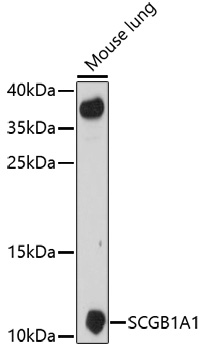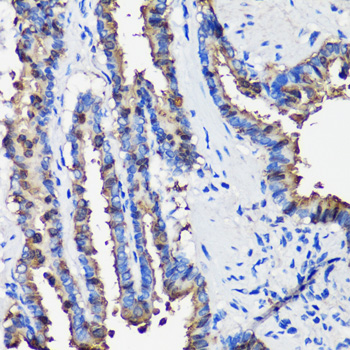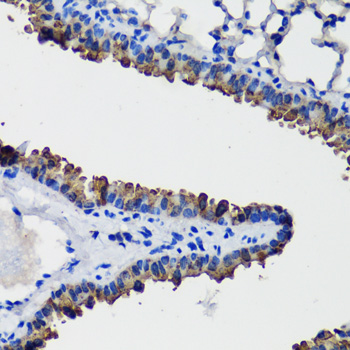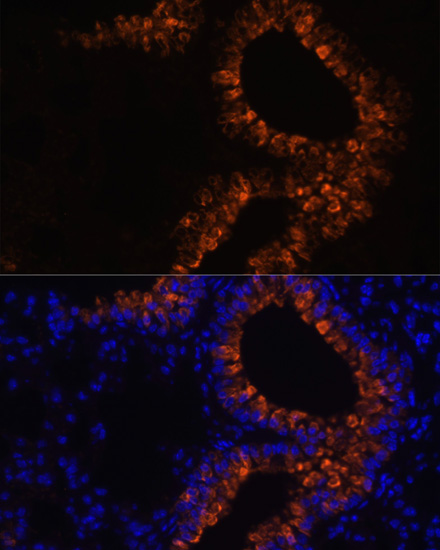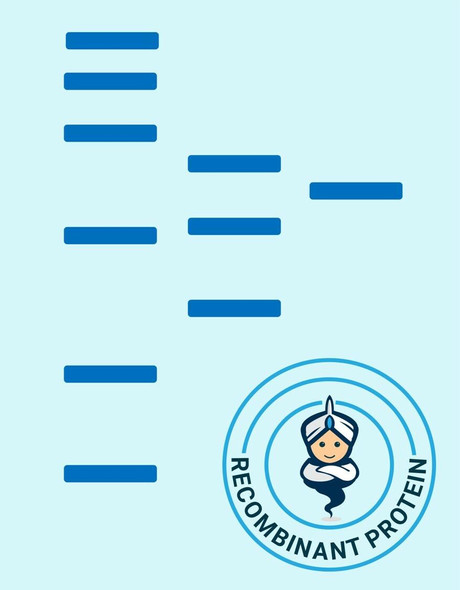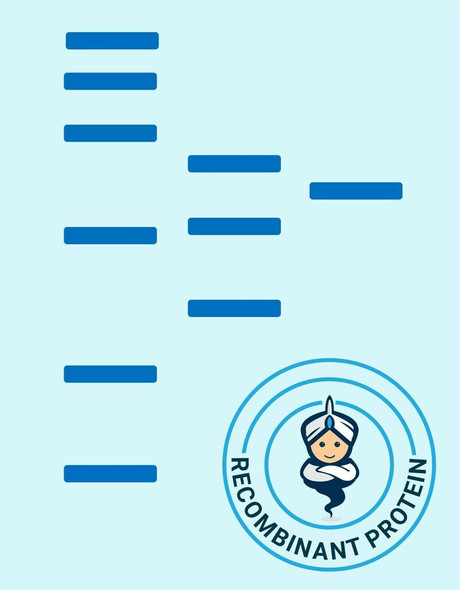Cell Biology Antibodies 7
Anti-SCGB1A1 Antibody (CAB16997)
- SKU:
- CAB16997
- Product Type:
- Antibody
- Reactivity:
- Mouse
- Reactivity:
- Rat
- Host Species:
- Rabbit
- Isotype:
- IgG
- Antibody Type:
- Polyclonal Antibody
- Research Area:
- Cell Biology
Description
| Antibody Name: | Anti-SCGB1A1 Antibody |
| Antibody SKU: | CAB16997 |
| Antibody Size: | 20uL, 50uL, 100uL |
| Application: | WB IHC IF |
| Reactivity: | Mouse, Rat |
| Host Species: | Rabbit |
| Immunogen: | Recombinant fusion protein containing a sequence corresponding to amino acids 22-91 of human SCGB1A1 (NP_003348.1). |
| Application: | WB IHC IF |
| Recommended Dilution: | WB 1:500 - 1:2000 IHC 1:50 - 1:200 IF 1:50 - 1:200 |
| Reactivity: | Mouse, Rat |
| Positive Samples: |
| Immunogen: | Recombinant fusion protein containing a sequence corresponding to amino acids 22-91 of human SCGB1A1 (NP_003348.1). |
| Purification Method: | Affinity purification |
| Storage Buffer: | Store at -20'C. Avoid freeze / thaw cycles. Buffer: PBS with 0.02% sodium azide, 50% glycerol, pH7.3. |
| Isotype: | IgG |
| Sequence: | EICP SFQR VIET LLMD TPSS YEAA MELF SPDQ DMRE AGAQ LKKL VDTL PQKP RESI IKLM EKIA QSSL CN |
| Gene ID: | 7356 |
| Uniprot: | P11684 |
| Cellular Location: | |
| Calculated MW: | 9kDa |
| Observed MW: | Refer to figures |
| Synonyms: | SCGB1A1, CC10, CC16, CCPBP, CCSP, UGB, UP-1, UP1 |
| Background: | This gene encodes a member of the secretoglobin family of small secreted proteins. The encoded protein has been implicated in numerous functions including anti-inflammation, inhibition of phospholipase A2 and the sequestering of hydrophobic ligands. Defects in this gene are associated with a susceptibility to asthma. |
| UniProt Protein Function: | SCGB1A1: Binds phosphatidylcholine, phosphatidylinositol, polychlorinated biphenyls (PCB) and weakly progesterone, potent inhibitor of phospholipase A2. Belongs to the secretoglobin family. |
| UniProt Protein Details: | Protein type:Secreted; Cell cycle regulation; Secreted, signal peptide; Inhibitor Chromosomal Location of Human Ortholog: 11q12.3 Cellular Component: extracellular space; rough endoplasmic reticulum; nuclear envelope; secretory granule Molecular Function:protein binding; phospholipase A2 inhibitor activity Biological Process: response to drug; negative regulation of interleukin-4 production; response to glucocorticoid stimulus; response to lipopolysaccharide; female pregnancy; negative regulation of transcription from RNA polymerase II promoter; signal transduction; regulation of mRNA stability; response to xenobiotic stimulus; response to silicon dioxide; negative regulation of interleukin-13 production; negative regulation of T cell proliferation; response to ozone; negative regulation of interferon-gamma production; response to cytokine stimulus; negative regulation of catalytic activity; regulation of inflammatory response; negative regulation of interleukin-5 production; embryo implantation Disease: Asthma, Susceptibility To |
| NCBI Summary: | This gene encodes a member of the secretoglobin family of small secreted proteins. The encoded protein has been implicated in numerous functions including anti-inflammation, inhibition of phospholipase A2 and the sequestering of hydrophobic ligands. Defects in this gene are associated with a susceptibility to asthma. [provided by RefSeq, May 2010] |
| UniProt Code: | P11684 |
| NCBI GenInfo Identifier: | 112672 |
| NCBI Gene ID: | 7356 |
| NCBI Accession: | P11684.1 |
| UniProt Related Accession: | P11684 |
| Molecular Weight: | 16kDa |
| NCBI Full Name: | Uteroglobin |
| NCBI Synonym Full Names: | secretoglobin family 1A member 1 |
| NCBI Official Symbol: | SCGB1A1 |
| NCBI Official Synonym Symbols: | UGB; UP1; CC10; CC16; CCSP; UP-1; CCPBP |
| NCBI Protein Information: | uteroglobin |
| UniProt Protein Name: | Uteroglobin |
| UniProt Synonym Protein Names: | Clara cell phospholipid-binding protein; CCPBP; Clara cells 10 kDa secretory protein; CC10; Secretoglobin family 1A member 1; Urinary protein 1; UP-1; UP1; Urine protein 1 |
| Protein Family: | Uteroglobin |
| UniProt Gene Name: | SCGB1A1 |
| UniProt Entry Name: | UTER_HUMAN |


